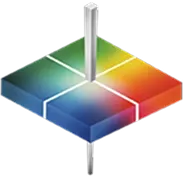
Measuring the color of transparent and opaque pellets can be challenging, considering varied sample attributes such as different sizes, shapes, and textures. Here are six key things to keep in mind to ensure accurate results every time.
1. Transparency and Opaqueness Vary
Transparent pellets allow light to pass through completely. On the other hand, opaque pellets reflect light so that it doesn't pass through. While it's easy to identify a transparent or opaque object with the naked eye, the transparency or opaqueness of one object can vary from another. Accurately measuring the color of pellets enables you to consistently achieve the desired degree of transparency or opaqueness.
2. Color Is Essential for Quality
In the plastic industry, color is an important aspect of quality standards. Meeting color standards while aligning the final product with your specified design is vital for manufacturing high-quality goods.
The color of plastic pellets does not directly impact the color and appearance of the final product due to other contributing factors. However, measuring the transparency or opaqueness of pellets is important for monitoring quality control in the manufacturing process.

